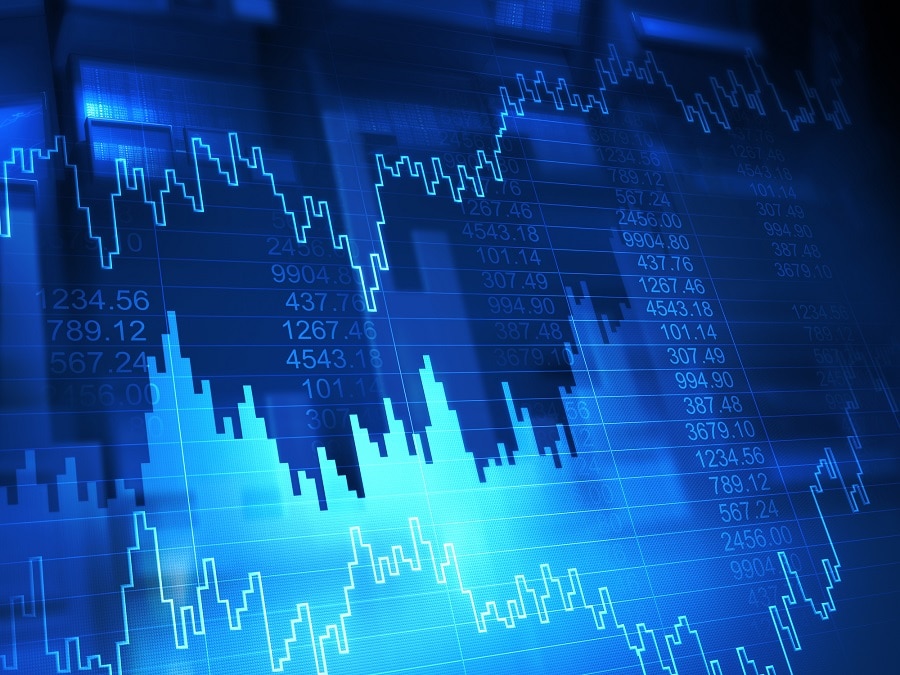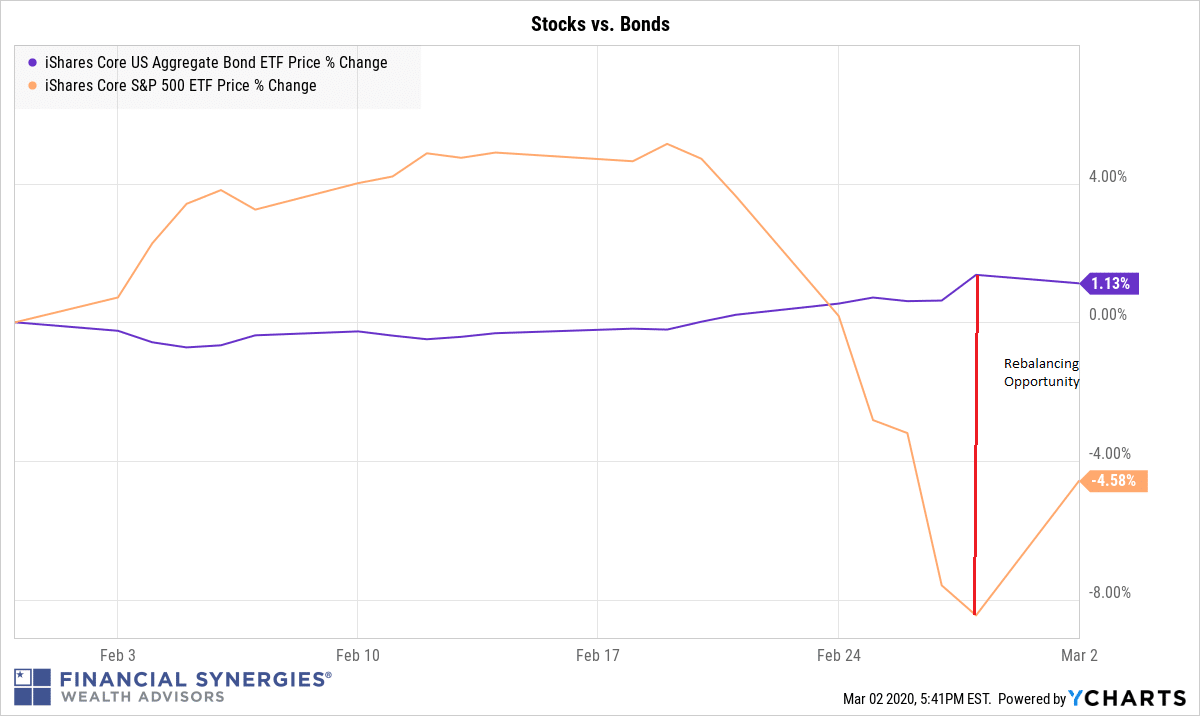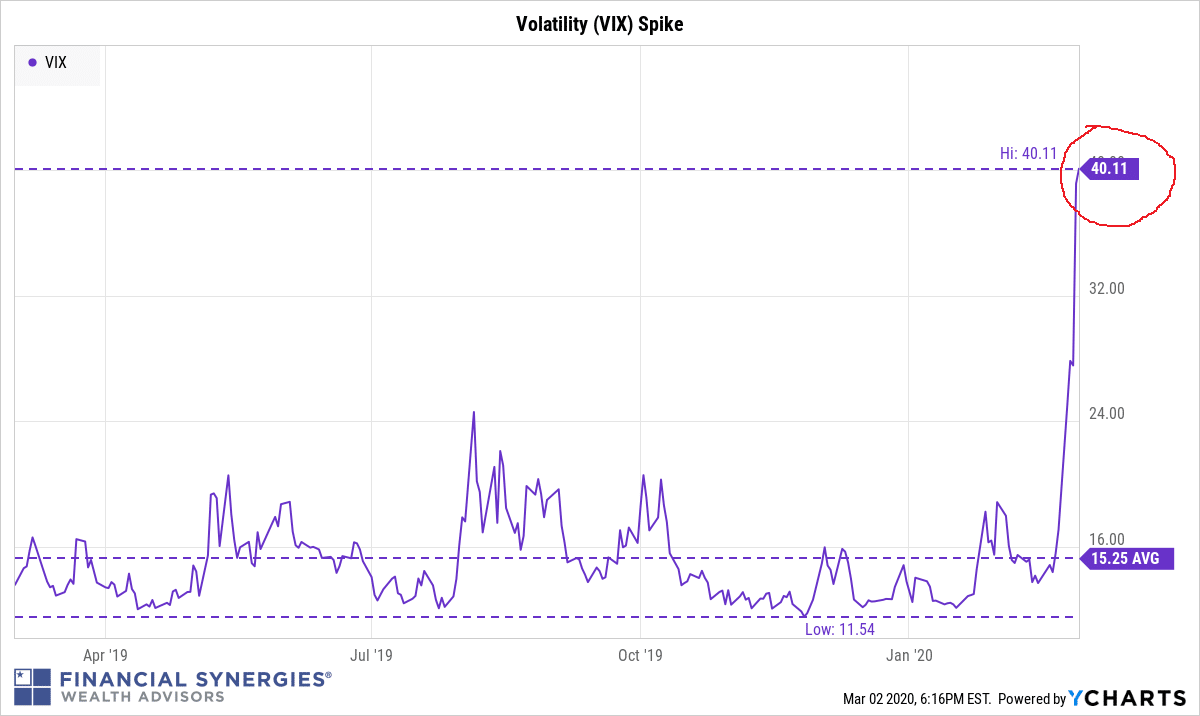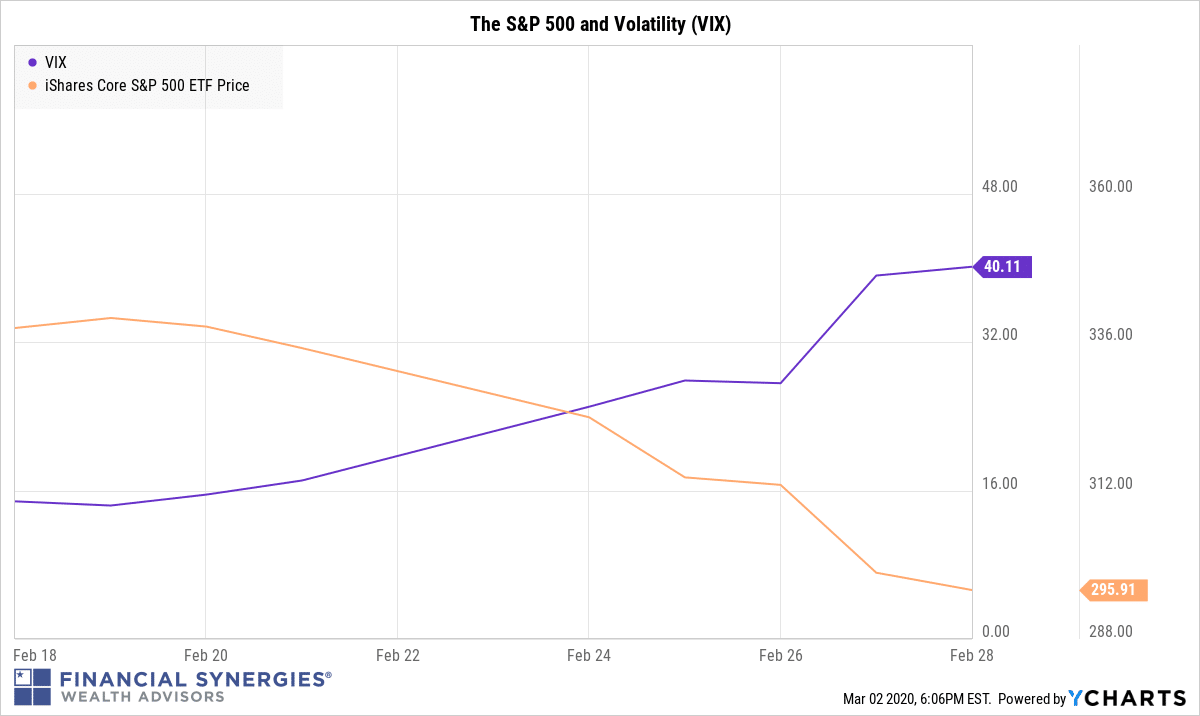[ad_1]

Now that’s what you call volatility! And what a difference a day makes. Monday, in a dramatic reversal from last week’s steep losses, the US stock market posted its best performance in more than a decade. The Dow Jones Industrial Average surged 1,293.96 points (+5.1%) in its biggest one-day percentage gain since 2009, and its biggest point gain ever.
Granted, we’ve got a ways to go before recovering last week’s colossal sell-off (and technical correction), but at least it was a reprieve from the punishment investors have taken recently. And I suspect this volatility (and Coronavirus situation) is far from over – it usually takes time for these things to shake out. There will be more ups and downs before it’s all said and done.
The silver lining to all this volatility is that it can open up some portfolio rebalancing opportunities. You may have noticed some recent trades in your accounts. Yes, that was me. I am primarily selling bonds and buying into stocks. There are still some opportunities, so I will most likely be trading throughout the week.
Not all portfolios necessarily require trading. Whether a portfolio requires rebalancing depends on a lot of factors: overall allocation, cash inflows and outflows, asset class drift, tolerance levels, tax ramifications, etc.
It’s not often that bonds become significantly overweight relative to stocks so quickly. But that’s exactly what happened last week.
When the performance gap widens to a level we deem to be large enough, we’ll take action to bring the asset classes back to their optimal weights. This is what happened last week between stocks and bonds. This movement created a rebalancing opportunity where we trimmed off bonds and bought into stocks.
These opportunities require some level of market volatility to be present, especially in the short run. And there has been no shortage of volatility recently.
Last week we saw a dramatic spike in the VIX, or stock market volatility index, as it reached a level of 40! It hasn’t even come close to that level since 2015. In the last five years the average level of the VIX has been around 15.
When you see a spike in volatility like that, you can be pretty sure it will be accompanied by a stock market decline.
Here you see the recent increase in volatility and the precipitous drop in the market (S&P 500). As we’ve seen time and time again, these drops and then the ensuing recoveries can occur so swiftly it’ll make your head spin.
We’re probably not out of the woods yet, and market volatility is never really gone – sometimes it just hibernates. Hang tight.
We understand that steep and sudden losses are hard to stomach, but we will get through this. Know that, as always, we are monitoring the markets and your portfolios closely.
[ad_2]
Source link Google News




